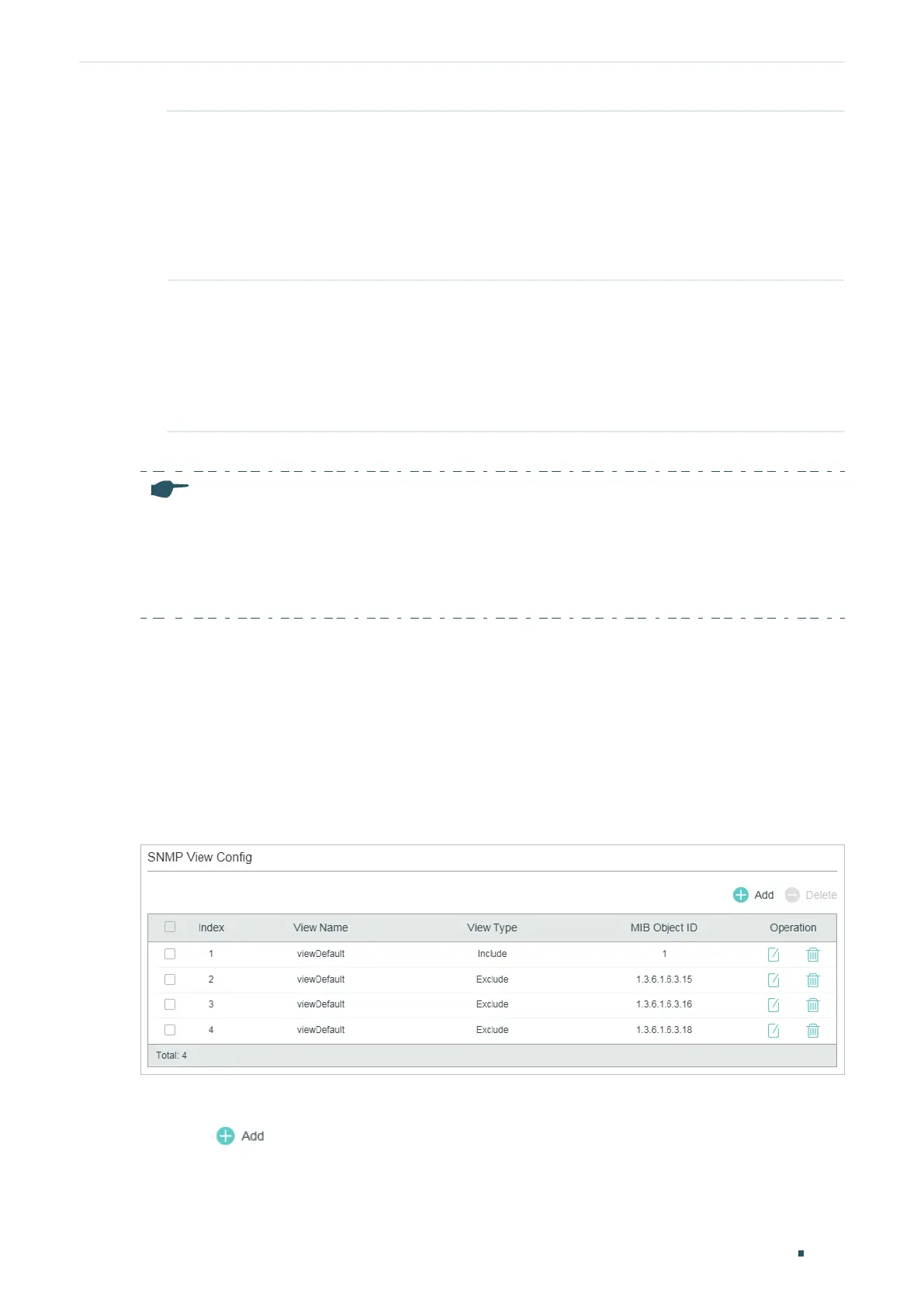SNMP Configurations
User Guide
1027
Local Engine ID Set the engine ID of the local SNMP agent (the switch) with 10 to 64 hexadecimal
digits. A valid engine ID must contain an even number of characters. By default, the
switch generates the engine ID using TP-Link’s enterprise number (80002e5703)
and its own MAC address.
The local engine ID is a unique alphanumeric string used to identify the SNMP
engine. As an SNMP agent contains only one SNMP engine, the local engine ID
can uniquely identify the SNMP agent.
Remote Engine ID Set the engine ID of the remote SNMP manager with 10 to 64 hexadecimal digits.
A valid engine ID must contain an even number of characters. If no remote SNMP
manager is needed, you can leave this field empty.
The remote engine ID is a unique alphanumeric string. It is used to identify the
SNMP engine on the remote device that receives Inform messages from the
switch.
2) Click Apply.
Note:
In SNMPv3, changing the value of the SNMP engine ID has important side effects. A user’s password
is converted to an MD5 or SHA security digest based on the password itself and the engine ID. If the
value of local engine ID changes, the switch will automatically delete all SNMPv3 local users as their
security digests become invalid. Similarly, all SNMPv3 remote users will be deleted if the value of
remote engine ID changes.
2.1.2 Creating an SNMP View
An SNMP view is a subnet of a MIB. NMS manages MIB objects based on the view. The
system has a default view named viewDefault. You can create a new one or edit the default
view according to your needs.
Choose the menu MAINTENANCE > SNMP > Global Config to load the following page.
Figure 2-2 SNMP View Config
Follow these steps to create an SNMP view:
1) Click
to load the following page. Enter a view name, and specify the view type
and a MIB object ID that is related to the view.

